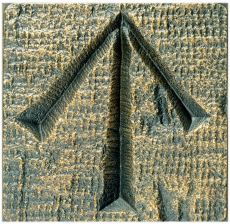The Convict Trail Project
The Convict Trail Project has been in existence since the early 1990’s. It was initiated by the Bucketty and Wollombi communities (population 150 and 300 respectively) because of their concern about the degradation which was occurring to relics of the convict built Great North Road in their areas. The degradation resulted from a combination of neglect, vandalism, lack of awareness of the significance of the relics, and a lack of an overall management or conservation plan.
Frustrated by attempts to find an organisation or agency which was responsible for managing the Road, the local communities took the initiative in their own areas, and began restoring damaged sites under the guidance of a historical archaeologist and with the assistance of their local council. Realising that similar situations were probably happening elsewhere along the 240 km Road, in 1994 the groups began to involve other organisations with an interest in, or responsibility for conservation, management and promotion of the Great North Road. To date over 30 groups have joined the Convict Trail Project, ranging from councils, community groups, regional tourist organisations, government agencies, academic institutions and heritage organisations.
The Great North Road goes through over a dozen local government areas, each with a responsibility for managing heritage sites in their area. Parts of the Road also come under the jurisdiction of the National Parks and Wildlife Service, and the NSW Roads and Traffic Authority. By bringing together all these organisations with a responsibility for managing the Great North Road, and a range of community groups with an interest in its conservation and promotion the Convict Trail Project provides a unique forum for the long term management of one of Australia’s national treasures.
Frustrated by attempts to find an organisation or agency which was responsible for managing the Road, the local communities took the initiative in their own areas, and began restoring damaged sites under the guidance of a historical archaeologist and with the assistance of their local council. Realising that similar situations were probably happening elsewhere along the 240 km Road, in 1994 the groups began to involve other organisations with an interest in, or responsibility for conservation, management and promotion of the Great North Road. To date over 30 groups have joined the Convict Trail Project, ranging from councils, community groups, regional tourist organisations, government agencies, academic institutions and heritage organisations.
The Great North Road goes through over a dozen local government areas, each with a responsibility for managing heritage sites in their area. Parts of the Road also come under the jurisdiction of the National Parks and Wildlife Service, and the NSW Roads and Traffic Authority. By bringing together all these organisations with a responsibility for managing the Great North Road, and a range of community groups with an interest in its conservation and promotion the Convict Trail Project provides a unique forum for the long term management of one of Australia’s national treasures.
The Board
The Convict Trail Project Inc Board for 2019 – 2020 is listed below:-
Four representatives of community organisations:
Four representatives of community organisations:
- Ken Bradley – Dural & District Historical Society Inc
- Mari Metzke – Hornsby Shire Historical Society Inc.
- Pam Wilson – The Hills District Historical Society Inc.
- Stuart Gibson – Wollombi Museum and Historical Society
- Cr Robert Browne
- Reg Norris
- Elizabeth Roberts
- Barbara Appleton
- Jan Kofron
- John Roberts
Executive
The Executive comprises the Chair: Stuart Gibson, Treasurer: Reg Norris, Secretary: Jan Kofron and Vice Chair: Mari Metzke.
The Executive oversees the work of the Project Director, Wesley Warren and the strategic direction, actions and financial operation of the Project.
The Executive oversees the work of the Project Director, Wesley Warren and the strategic direction, actions and financial operation of the Project.
Day-to-day Management
The day-to-day management of the Convict Trail Project is the responsibility of the Project Director. The work of the Project Director is guided by the objectives of the Convict Trail Project as stated in the rules and by the availability of grant funding for special projects in the 2017 strategic plan. The Executive Director reports regularly to the Executive who correspond by email and meet as required.
Communications
• Board members receive regular reports from the Project Director
• A newsletter is published every month and distributed electronically to all members
• A newsletter is published every month and distributed electronically to all members
Annual General Meeting
An Annual Meeting is held late each year (usually November or early December) to present a summary of the activities and achievements of the year. Anyone is welcome to attend these meetings as observers, and to provide input. Meetings have been hosted by participating councils on a rotating basis.

